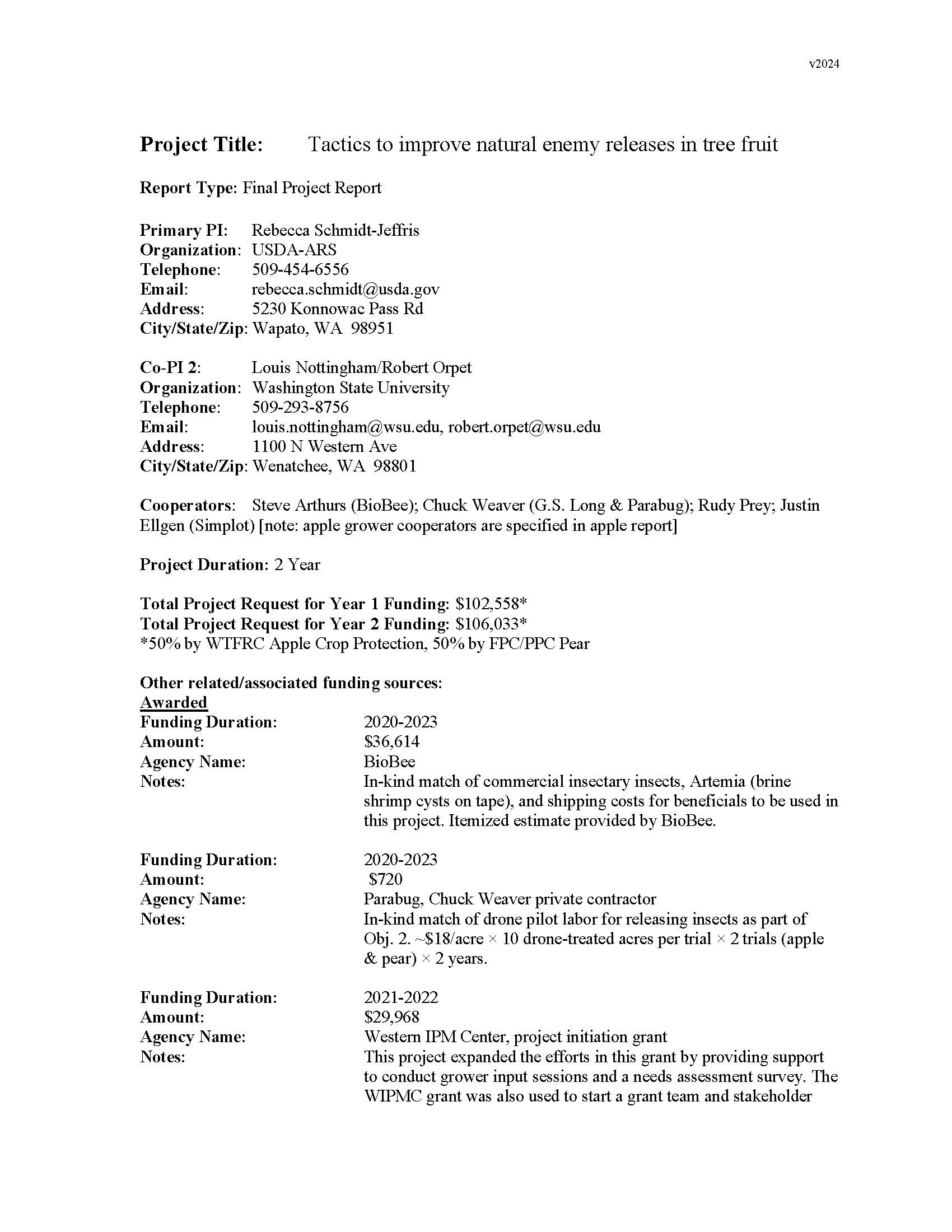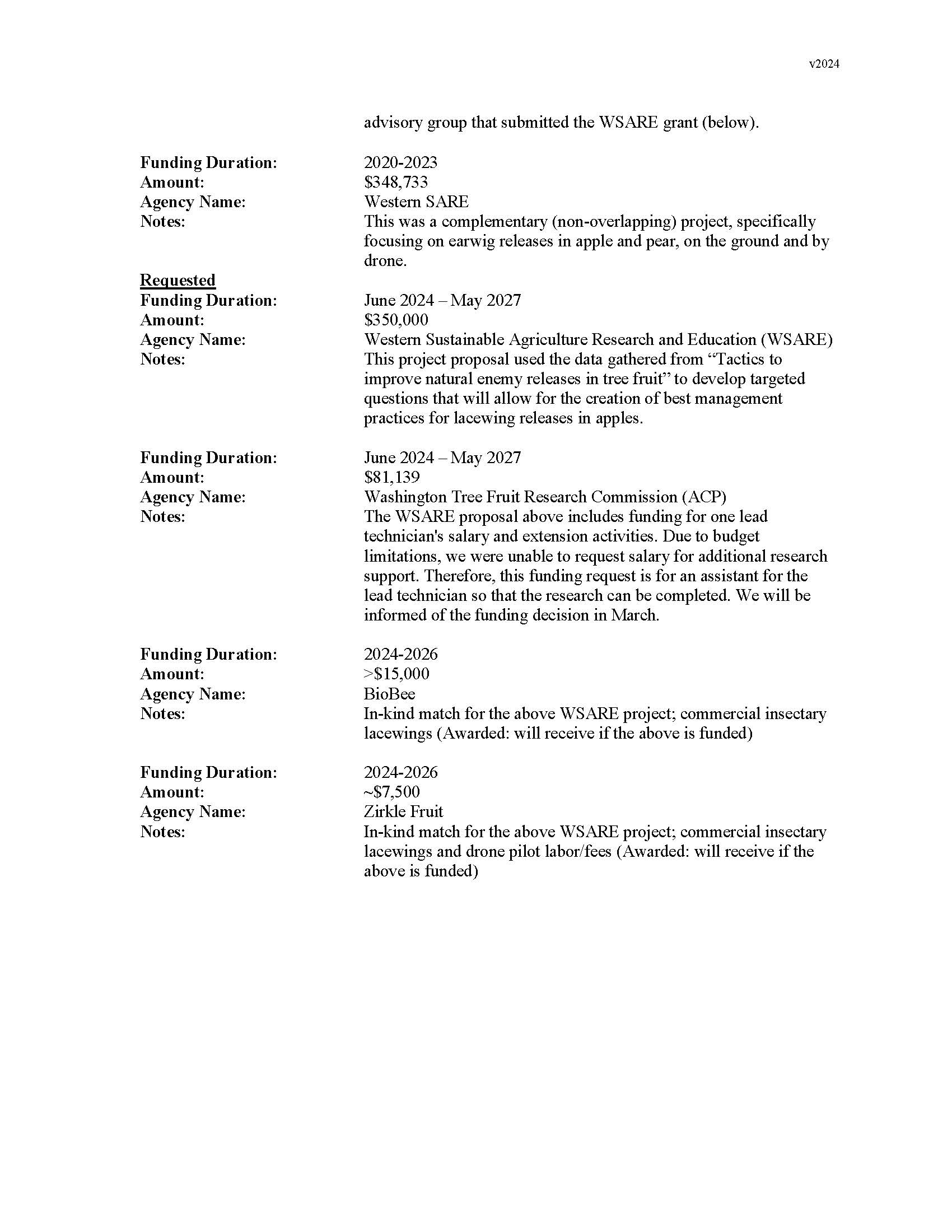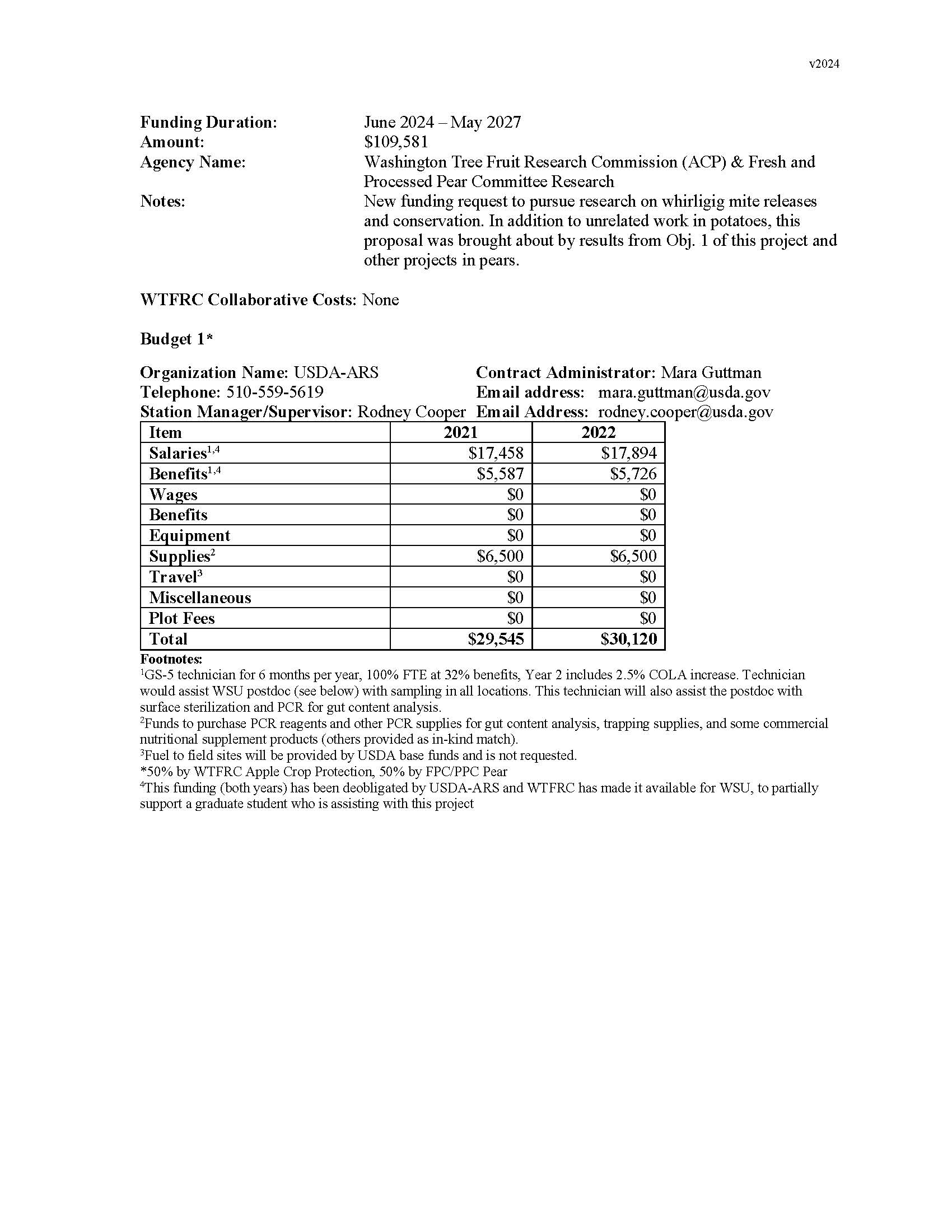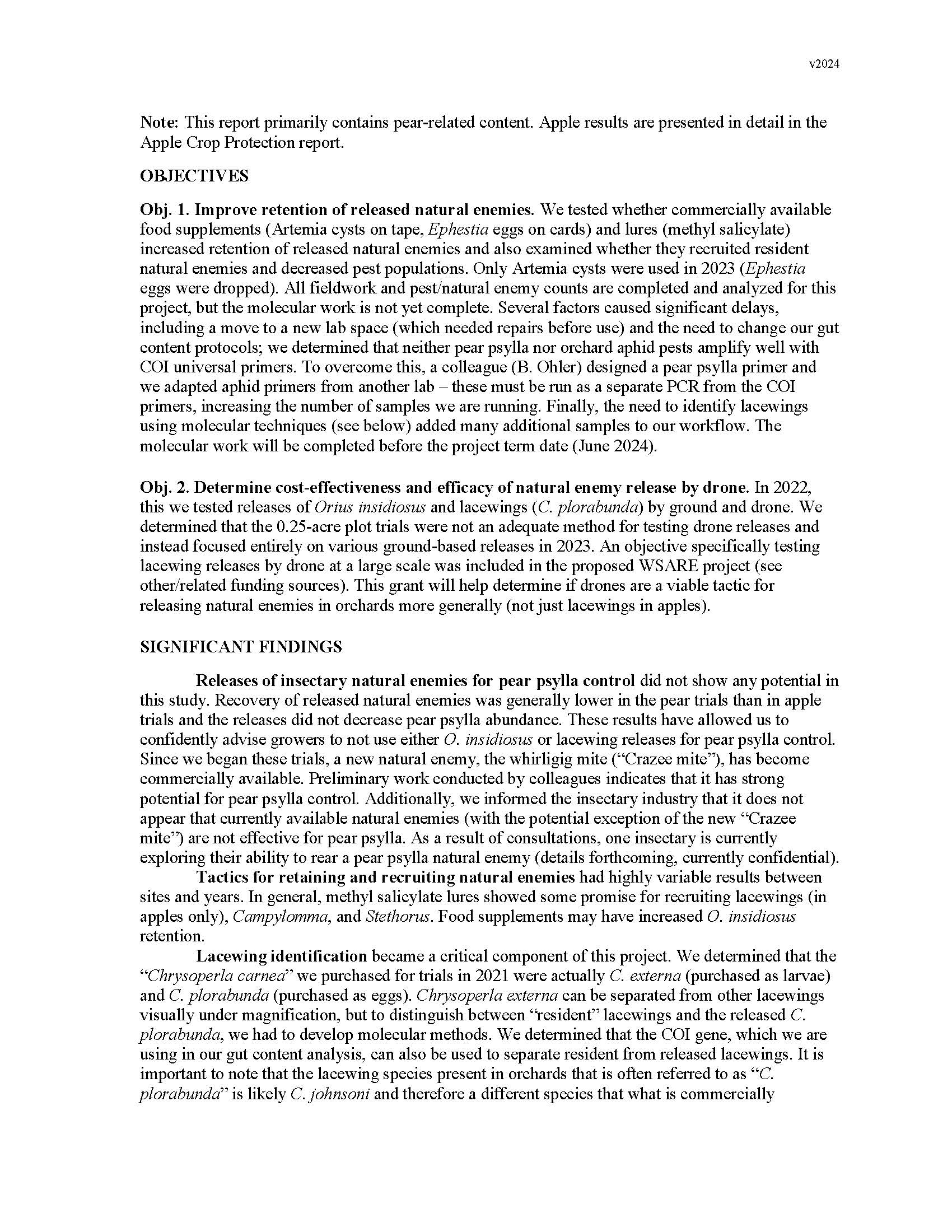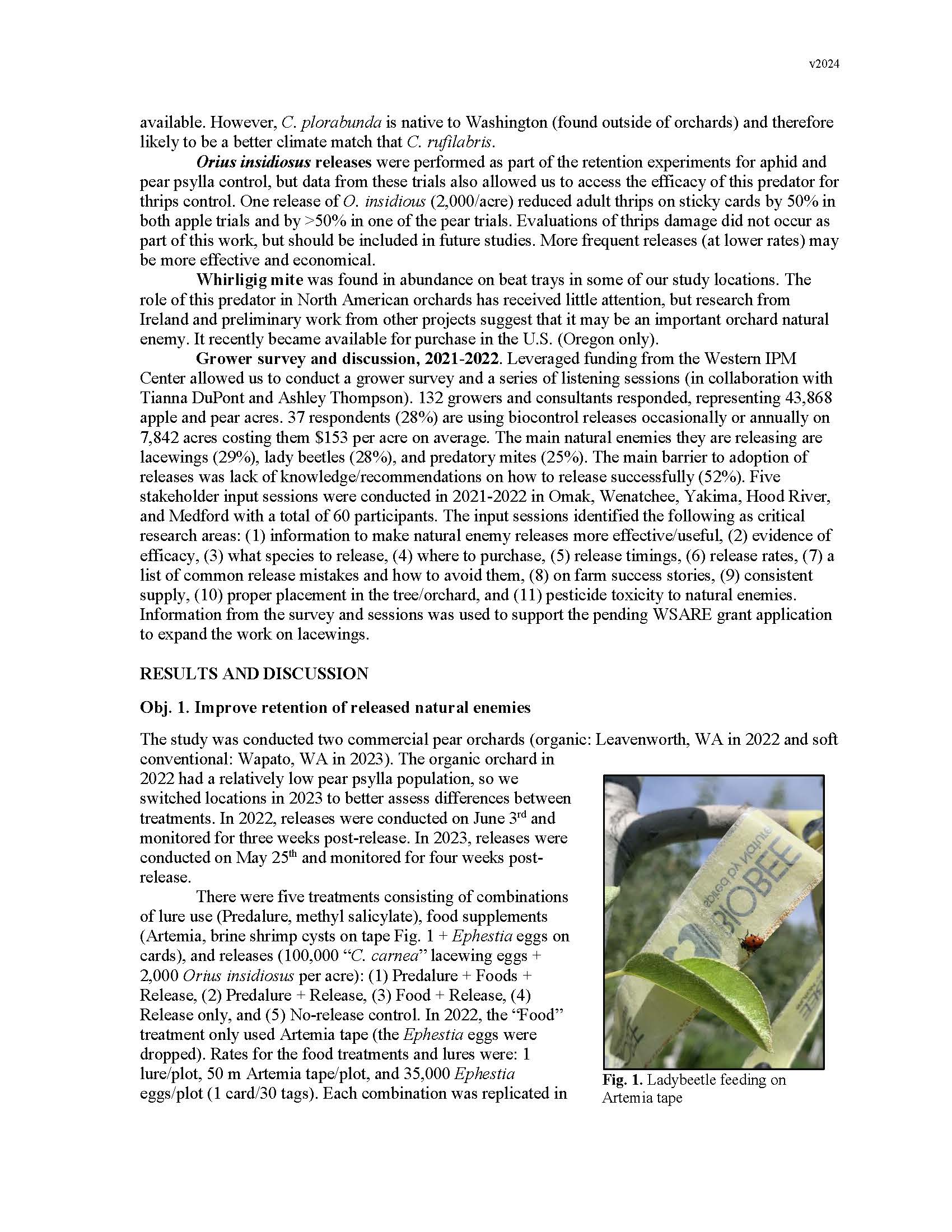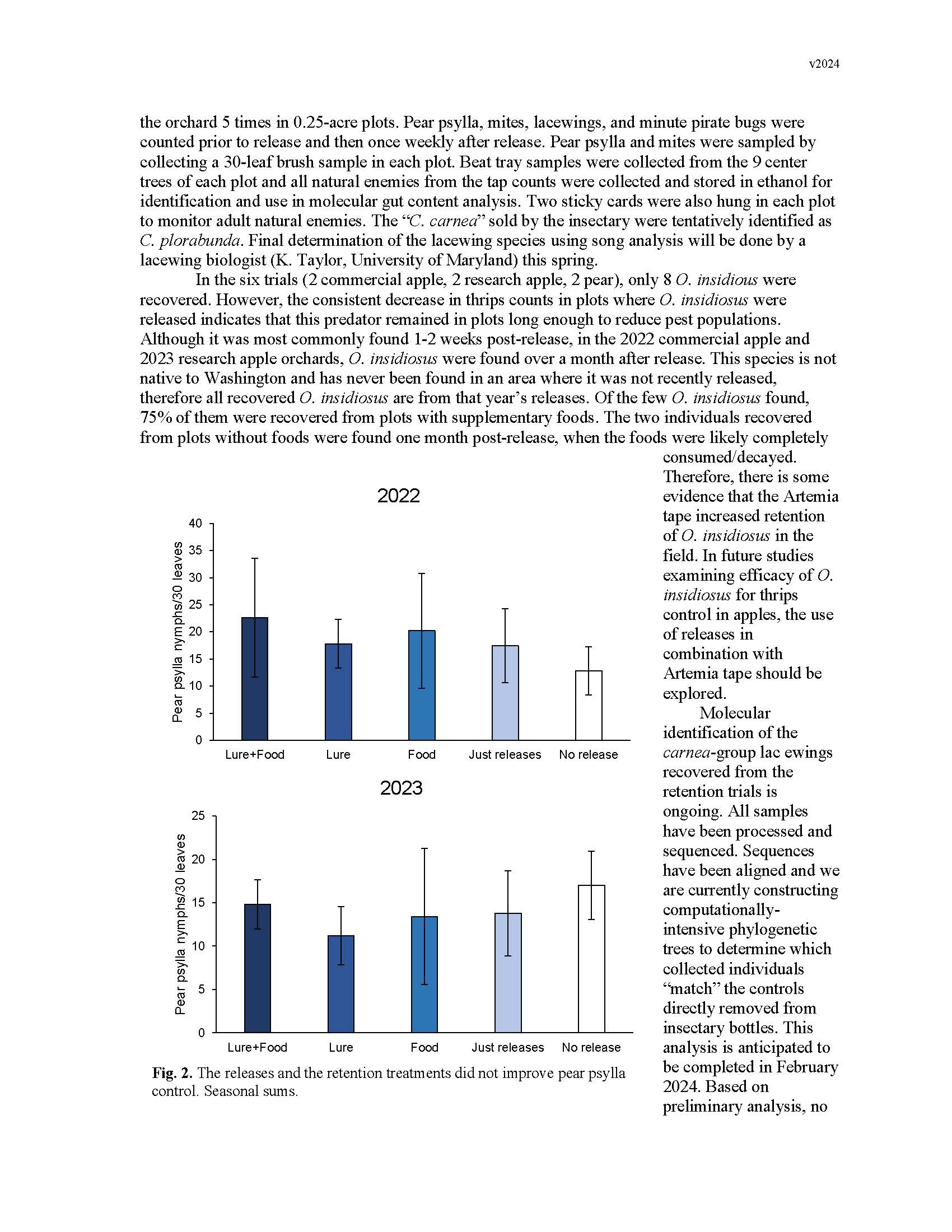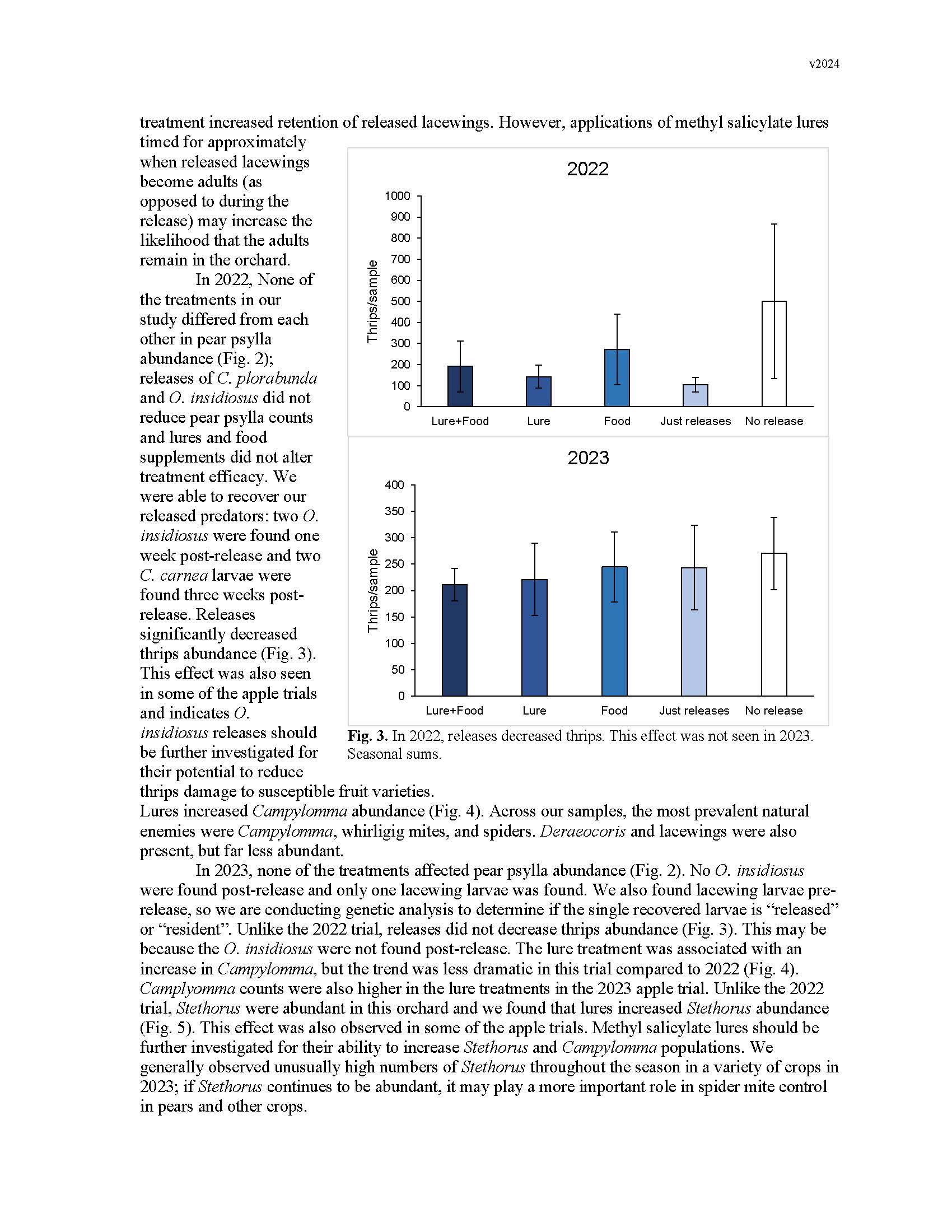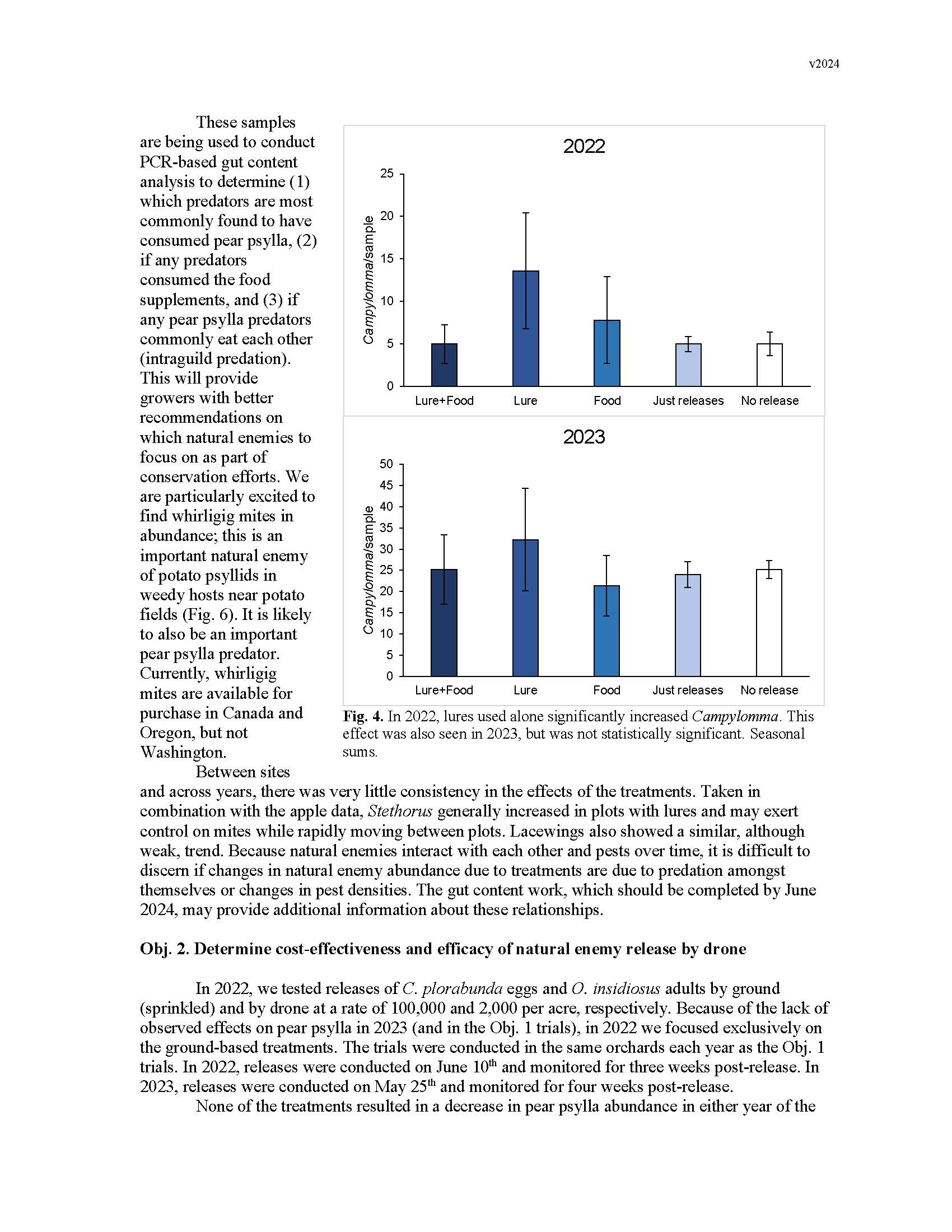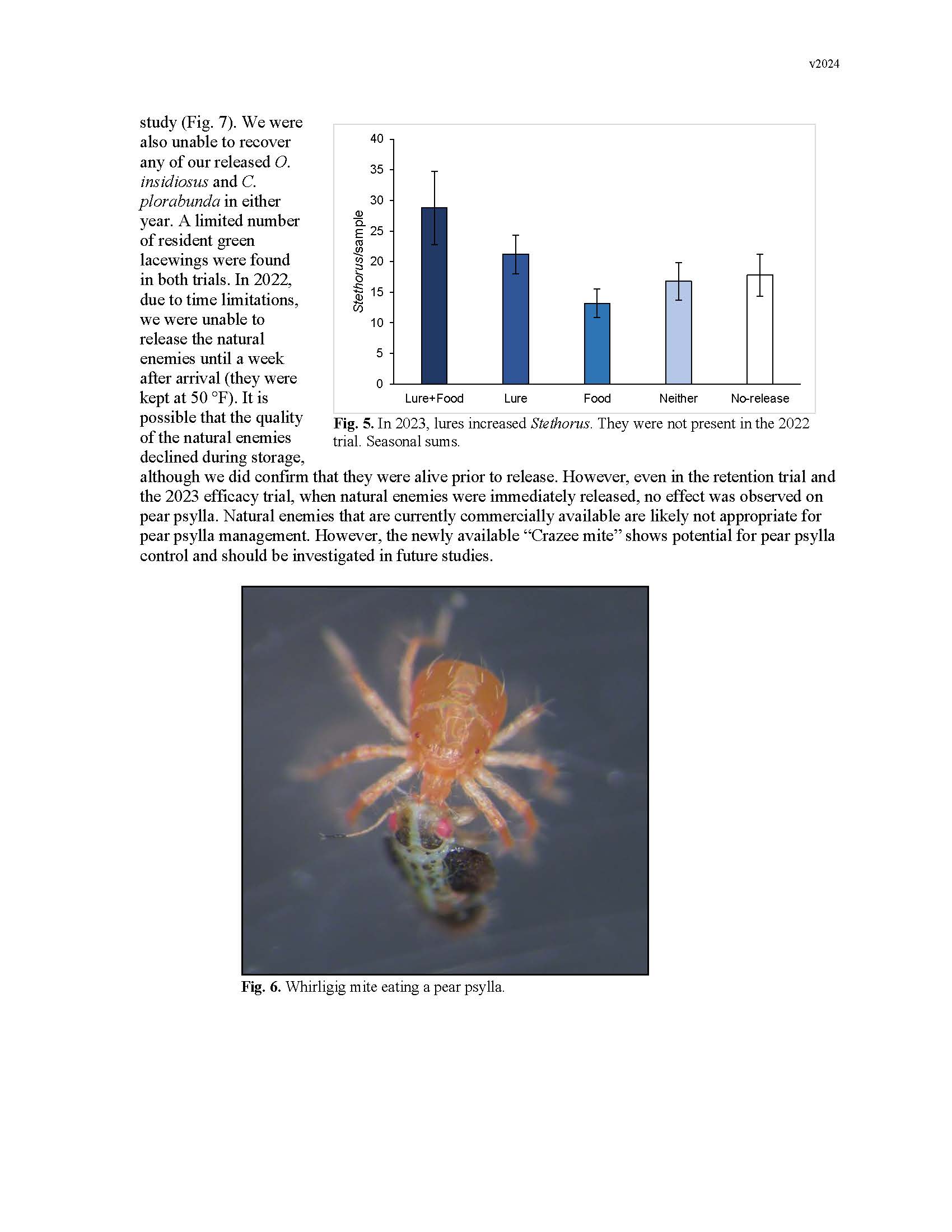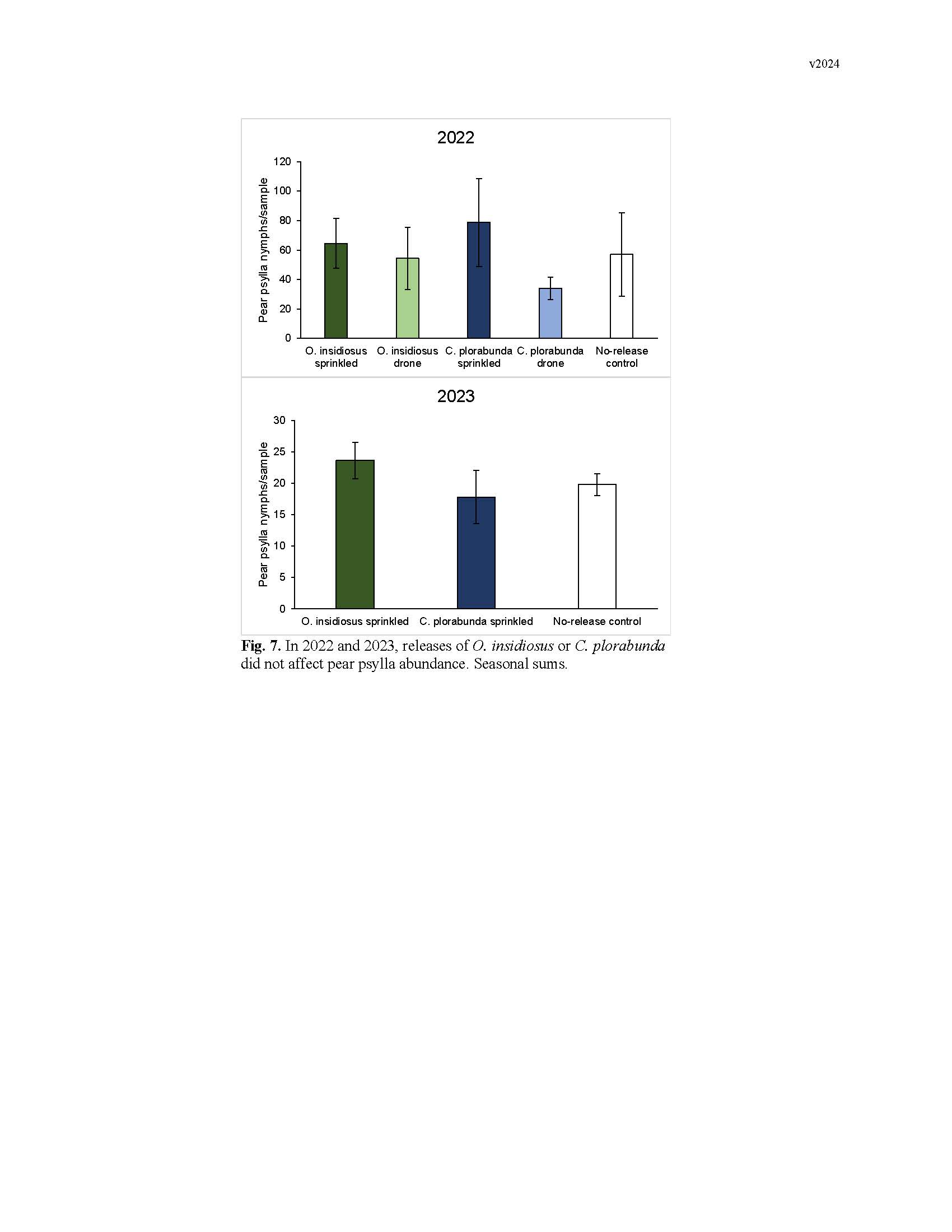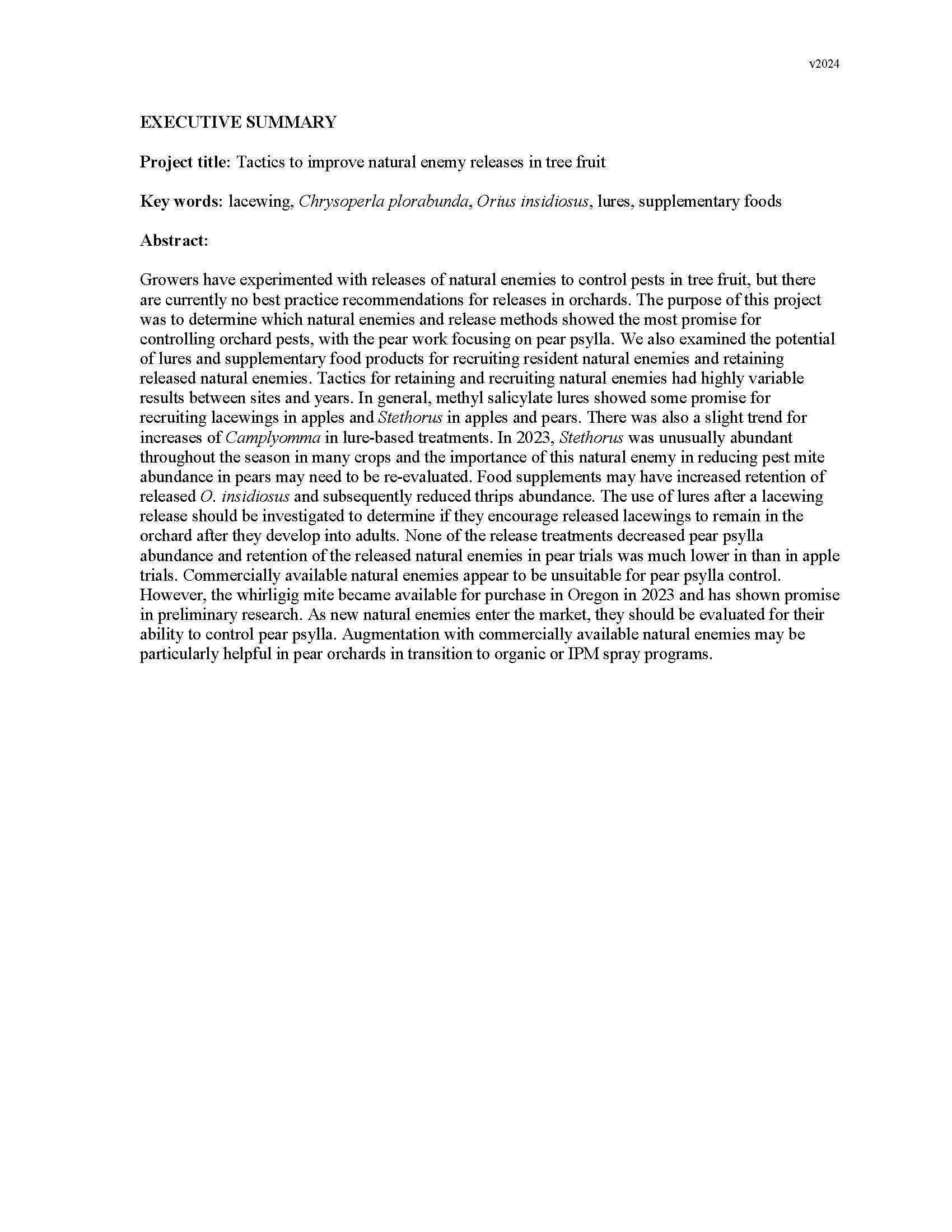Tactics to improve natural enemy releases in tree fruit
Author: Rebecca Schmidt-Jeffris
Published: 2024
Summary: Growers have experimented with releases of natural enemies to control pests in tree fruit, but there are currently no best practice recommendations for releases in orchards. The purpose of this project was to determine which natural enemies and release methods showed the most promise for controlling orchard pests, with the pear work focusing on pear psylla. We also examined the potential of lures and supplementary food products for recruiting resident natural enemies and retaining released natural enemies. Tactics for retaining and recruiting natural enemies had highly variable results between sites and years. In general, methyl salicylate lures showed some promise for recruiting lacewings in apples and Stethorus in apples and pears. There was also a slight trend for increases of Camplyomma in lure-based treatments. In 2023, Stethorus was unusually abundant throughout the season in many crops and the importance of this natural enemy in reducing pest mite abundance in pears may need to be re-evaluated. Food supplements may have increased retention of released O. insidiosus and subsequently reduced thrips abundance. The use of lures after a lacewing release should be investigated to determine if they encourage released lacewings to remain in the orchard after they develop into adults. None of the release treatments decreased pear psylla abundance and retention of the released natural enemies in pear trials was much lower in than in apple trials. Commercially available natural enemies appear to be unsuitable for pear psylla control. However, the whirligig mite became available for purchase in Oregon in 2023 and has shown promise in preliminary research. As new natural enemies enter the market, they should be evaluated for their ability to control pear psylla. Augmentation with commercially available natural enemies may be particularly helpful in pear orchards in transition to organic or IPM spray programs. Key words: lacewing, Chrysoperla plorabunda, Orius insidiosus, lures, supplementary foods
Keywords:

